
|
|
|
|
Ukiyo-e Prints浮世絵版画 |
|
formerly Port Townsend, Washington now Kansas City, Missouri |
|
NISHIMURA HODŌ |
|
西村蒲堂 |
|
Untitled |
|
Publisher: Takemura Hideo |
|
竹村秀雄 |
|
Size: 15 3/8" x 11" |
|
Date: 1940, 5th Month |
|
Showa 15 |
|
昭和15 |
|
From the collection of Robert O. Muller. |
|
$265.00 SOLD! THANKS K! |
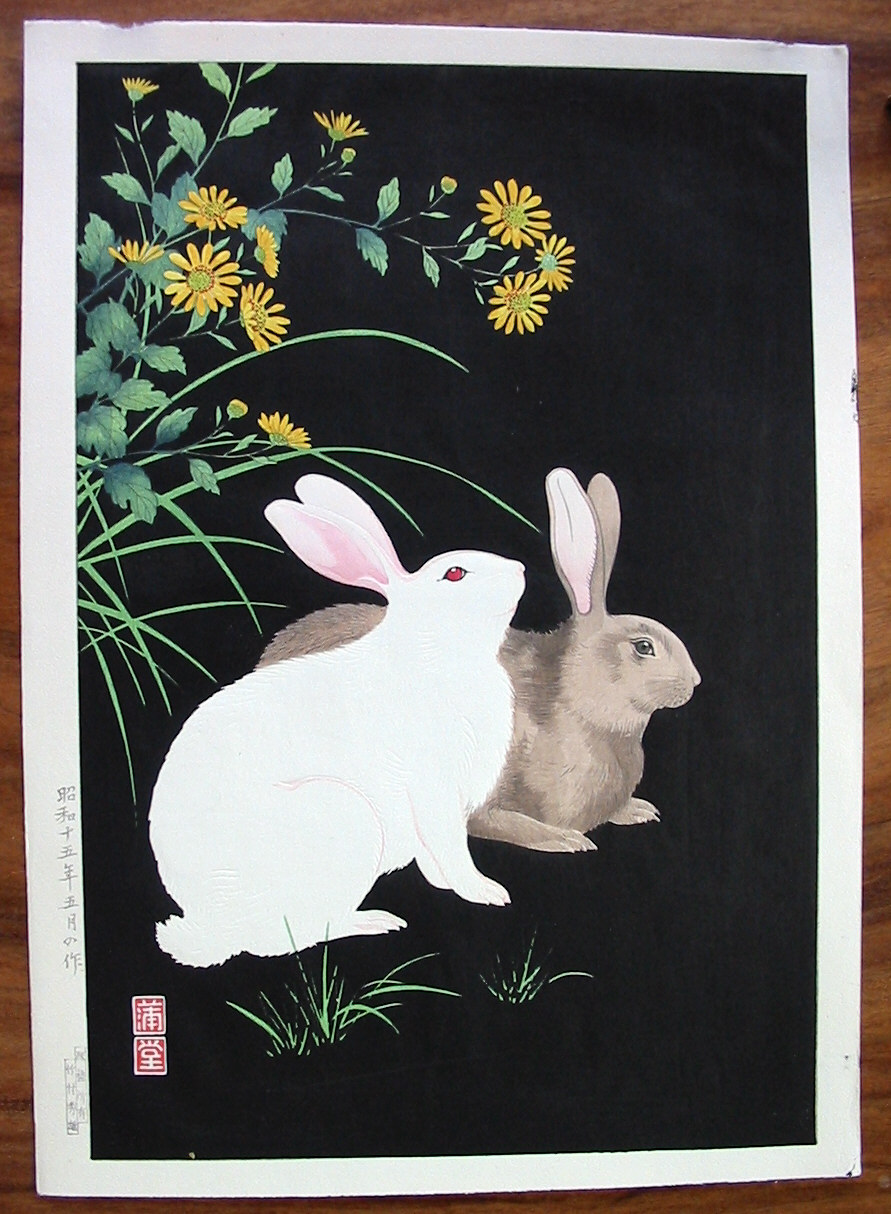
|
Publisher's Seal: Takamura Hideo |
|
|
|
|
|
|
竹 村 秀 雄
|
|
|
|
|
|
|
|
Date: Shōwa 15 |
|
|
|
|
|
|
|
|
HARES IN EAST ASIAN ART 兎 |
|
|
|
|
|
Above is a detail from a Yoshitoshi print where the superhuman child
Kintoki is
judging a wrestling match between a
|
|
|
|
|
|
It is said that when the Chinese look at the moon they see a rabbit (or hare) sitting under an acacia tree pounding the elixir of life, i.e., a substance which gives immortality. Like the alchemists of Europe the ever practical conjurers of the Middle Kingdom were forever trying to imitate the actions of that crazy rabbit. It is also said that some court figures died after drinking some of these earthly concoctions. Since there is a yin and a yang to things Chinese the rabbit has its counterpart in a three-legged crow on the sun. I don't know what the crow stood for, but there was probably some significance attributed to it.
In Japan the |
|
|
Above is a portrait of an actor by Kunimaro. As you can see it is accompanied by a rabbit in the moon, but what the connection is I don't know.
|
|
|
The Chinese and Japanese use the same single character 兔 to mean rabbit or hare. The 兎 seen at the head of this section is simply a variation. In Chinese the characters 玉兔 mean the rabbit in the moon or by extension as a poetical reference to the moon itself. |
|
|
|
|
|
|
|
|
The rabbit or hare is one of the twelve creatures of the zodiac. They are the rat, ox, tiger, hare, dragon, snake, horse, ram, monkey, cock, dog and boar. Look closely at the detail of the Kuniyoshi print of a man's head shown above and you will be able to make out at least eight of these. If you find the hare you will have the hit the point right on the nose. Myself...I was born in the year of the boar, but maybe you had already figured that out. |
|
|
|
|
|
According to Mock Joya "Persons born in the year of...the rabbit are meek and weak. They are good natured, but easily led astray by others who are stronger-willed. They have a loveable personality, and will be liked by all. They will never become leaders, but they will be always happy, as they meekly accept their fate."
Just in case you aren't sure when the rabbit years were here is a short list: 1867, 1879, 1891, 1903, 1915, 1927, 1939, 1951, 1963, 1975, 1987, 1999. Here is a list of a few of the people who were definitely not very loveable or pushovers who were born in a rabbit year: 1867 - Frank Lloyd Wright and Cy Young; 1879 -Joseph Stalin; 1891 - Erwin Rommel; 1903 - John Dillinger; 1915 - General Pinochet... I think I have made my point. |
|
|
|
|
|
BRRRRRRRR RABBIT!!!
|
|
|
|
|
|
When I was a kid, like all other children who lived in a region that had serious snowstorms, I couldn't wait to go outside and roll snowballs large enough to make a decent sized snowman. You know "Frosty the Snowman" with his corncob pipe and eyes made out of coal. Well, so what if I didn't have any corncobs or coal to play with that didn't stop me from improvising: carrot, hat, scarf, broom. From what I can tell the Japanese did pretty much the same thing. Only it wasn't Frosty which they created. It was other things like darumas or snow bunnies. In fact, there are a number of examples of such sculpted rabbits which were created for the amusement of both young and old. Above is a detail from a triptych by Toyokuni I where beautiful women are tempting a small child who is reaching out for the 'animal'. Below the postage stamp you will find a detail from a print by Yoshitoshi created many decades later. I know of at least one other example in a private collection in the Midwest. That too is by Toyokuni I.
One caveat: Don't mistake these snow bunnies for the real McCoy, the Artic Hare. It would be easy to do, but don't do it - see! Besides hares and bunnies aren't exactly the same thing. Supposedly hares are born with loads of fur and can see at birth. Rabbits can't. Nor can snow ones either. Got it? |
|
|
|
|
|
|
|
|
HOW MANY RABBITS CAN YOU FIND IN THIS PICTURE?
THE ANSWER: NONE - UNLESS, OF COURSE, YOU ARE HEAVILY MEDICATED. |
|
|
|
|
|
I mentioned in the section above this one which dealt with Japanese snow bunnies that as a child I couldn't wait to go out and frolic in the purity of newly deposited snowdrifts. The deeper the better. However, not all of my childhood memories are sweetness and light. There were those horrendous visits to the dentist which seemed to be happening to me with increasing frequency. They weren't of course, but that is how I felt. Soon I was like the dog which knew when its owner was going to take him for a walk and when it was going to take him to the vet. Once there, the dentist's office and not the vet's, anxiously waiting for what seemed like an interminably long period in anticipation of the pain that was sure to come seconds seemed like minutes and minutes seemed like hours.* The whole time the soon to be inflicted imaginary pain grew to inhuman levels of perversity. The needles got larger. The drill went much deeper than necessary. "Sit still Jerry!" my mother would say. "Calm down Jerry!" it won't be that bad. "You'll see." And still I fidgeted. "Here look at this magazine. There are games in it." This was the routine. Every time. Every visit. And soon there was a magazine on my lap sitting open to a page with a black and white illustration which said "Find the number of presidents in this picture" or "Can you find the different barnyard animals in this drawing?" It was hard to find the chickens when I was one. But, be that as it may, I simply could not focus. That brings me to the point of this whole discourse --- most of which is fantasy --- that one of the visitors to this web site had read the entry about the snow bunnies mentioned in the section immediately above this one and noticed that I had mentioned that sometimes Japanese children (and adults) would build a daruma where we in the West would have built a snowman. The reader wrote and sent me this rare Kuniyoshi image. After opening the attachment and seeing how good it was I couldn't pass up the opportunity of sharing it with you - with the owner's permission. There may not be any rabbits in it, but who cares. Like I said it is too good not include on this page. Needless to say, I am truly grateful to this reader and I would be willing to bet that you are too. So, from both of us...thanks!
*In a witty little essay/story/parable by Primo Levi called "Time Checkmated" a character from the Grand Duchy of Neustria goes to the patent office to register his invention. In his description he says: "According to my measurements, one minute spent in front of a red traffic light is on the average 8 times longer than one minute spent conversing with a friend: 22 times if the friend is of the opposite sex." There it is. That is why I could play in the snow for hours although it seemed like seconds, but could not sit still in a dentist's office for just a few minutes without it seeming like years. One last point: I now live in Port Townsend, Washington and in the more than three and a half years I have been here there has not been enough snow to build one puny little snow anything. But if, just if, that heavier snowfall does come, as I have been told it will, I will sit in my apartment, sip my tea and look down from my picture window on all of those who still care to brave the cold. The bitter, bitter cold. |
|
|
|
|
|
|
|
|
|
|
|
Above is a crest or mon pairing the rabbit with waves which for some reason has a very long tradition in Japanese design motifs. When or if we find out why these two elements are combined so often you will be among the first to know. |
|
|
|
|
|
FABRIC DESIGNS
|
|
|
|
|
|
Above are two details from a Hokuei print dating from 1832. The actor in the female role is Iwai Shijaku I. Below are two details from one of Kuniyoshi Chushingura prints from 1847 portraying Kurahashi Zensuke Takeyuki.
Both images have been sent to us by a private Swiss collector. Thanks! They make a wonderful addition. |
|
|
|
|
|
|
|
|
Above is the earliest example we can show of a robe covered with rabbit or hare designs. There are also images of beautiful women on fans, floral motifs, the actor's crest, Shoki the Demon Queller, etc. This print of Uzaemon VIII is by Nishimura Shigenaga (1697?-1756) and is being shown courtesy of Kabuki 21. Click on the image to go to the Kabuki 21 home page. It is the best and most complete site in English and French on kabuki on the Internet. |
|
|
|
|
|
|
|
|
Above is a book illustration from the Bumpō gafu (文鳳画譜 or ぶんぽう.がふ) originally published in 1811, Bunka 8, although this may be from a later edition. This was sent to us by our contributor E. Thanks E! |
|
|
|
|
|
|
|
|
In China the people may have imagined that
they could see a rabbit sitting under an acacia tree pounding |
|
|
|
|
|
|
|
|
Three fashionable young rabbit dudes out for a night on the town. Detail from a Kuniyoshi print. Note the bat, another significant symbolical image, flying in front of the moon. |
|
|
|
|
|
The Japanese aren't the only ones susceptible to rabbit folklore. The Europeans and Americans have their own tales. Four examples come to mind immediately. There is always the modern jackalope, a rabbit or prairie dog with the antlers of grown stag. Postcards of this animal rarity can be purchased at truck stops, curio shops and the hippest of coffee houses and bookstores all through the American west. Then there is the ever present Easter bunny which is still celebrated on the lawn of the White House once a year. A third example is that of Harvey the six foot tall rabbit which is actually a pookah --- look it up! --- who is the constant companion of Elwood P. Dowd of stage and film fame. But strangest of all was the hoax of Mary Toft of Godalming who claimed to have given birth in 1726 to nine baby rabbits all still-born. Although I doubt that anyone who truly feels that the West is culturally superior will be reading this passage if they do let the four examples given above be an object lesson to them that there is folly everywhere and that sometimes it is a lot better to examine one's own cultural underpinnings than to criticize those of others. |
|
|
|
|
|
|
|
|
Above is a rabbit scene mimicking that of a human visitor to the high class courtesan or oiran. I don't know if they have already coupled and are relaxing afterwards as might be indicated by the female rabbit smoking her pipe or if this is part of the preliminary moments leading toward their moment of passion. Judging by human behavior it would seem that they have just finished. Note the wonderful domestic touches found in this image: the pillows, the lacquered tea caddy (?), the floor lamp and the lavish bedding. Could it be anymore comfy?
There is a whole genre or subgenre of ukiyo rabbit pictures. Everything done by the typical Japanese citizen during the Edo period was also portrayed as being done by rabbits. The whimsy of it all is wonderful and really not far removed from the Western versions we all grew up with from Lewis Carroll and his Mad Hatter, Joel Chandler Harris and Brer Rabbit, Disney's Bugs Bunny or even Margery Williams' Velveteen Rabbit. I am sure there are more examples, but I can't think of them right now. Nevertheless, not much sets any of these apart from their Japanese counterparts except perhaps the adult nature of some of the latter's imagery.
Just thought of another one --- two days later --- Beatrix Potter and her Peter Rabbit. |
|
|
|
|
|
"SPLITTING HARES" OR
TURNING
|
|
|
|
Sometime about a month ago - today is August 6, 2005 - one of my very favorite correspondents wrote to me and very gently suggested that I might be confounding rabbits with hares. His argument was that there was a distinct difference between the two and that the Japanese were referring to the latter as the animal used for their zodiac. Perhaps he was too gentle in his approach for me to truly grasp the point. I wrote back and admitted my ignorance, but explained to him that I was not convinced. I quoted dictionary definitions and noted that a rabbit was a rabbit, but that a hare was a kind of rabbit too. Or, was it the other way around? I don't recall. Either way I wasn't really understanding what he was trying to tell me. After several more e-mails I think that he must have been pulling his hair out in frustration. Finally he decided to be more direct and told me that I was wrong. I can accept that. It wouldn't have been the first time. What my correspondent didn't recognize was the depth of my ignorance when it comes to such matters. (We are all ignorant of something if not quite a few somethings, but not all of us are ready to admit it.) What my correspondent couldn't have known was that a very dear friend of mine who lives on a farm in north central Missouri has often laughed aloud at me when it came to my knowledge or lack thereof of matters regarding animal husbandry and its nomenclature. I am a city boy and have always figured that if I get close enough most people will know what I mean. But I guess not. Moreover, in deference to my correspondent who keeps trying to put me on the right path he is a city boy too, but miles beyond me when it comes to such things. Perhaps I am hare-brained and occasionally run around harum-scarum, but I am an old dog and new tricks do not come easily. But I will do my best if you will indulge me. |
|
Page from the preface to the Kisoji meisho zue by Akisato Ritô, illustrated by Nishimura Chûwa. Published in Osaka in 1814.
PRIVATE COLLECTION SWITZERLAND |
|
|
|
兎 USAGI (rabbit, hare or cony) T'U (in Chinese) In Mathews' Chinese-English Dictionary 兎 is listed at 6534 and is pronounced t'u. Mathews also shows the character 兔 as synonymous. Lin Yutang translates the phrase 玉兔 as "the rabbit in the moon" while Mathews refers to it as "a hare which is supposed to dwell in the moon and assist in preparing the elixir of immortality." In A Modern Chinese-English Dictionary (published by the Oxford University Press with Hai Feng Publishing Co., Ltd.) thirteen animals are shown in line drawings on page 1200 and shows a long-eared animal under the character 兔 and refers to it as a rabbit. But on page 1228 it uses the same character to indicate the hare as one of the animals of the zodiac. On page 899 they show it as both - an either or situation. In The Kanji Dictionary by Mark Spahn and Wolfgang Hadamitzky (0.a8.5) give rabbit as the only translation for 兎, 兔 and 菟. They give 野兎 as hare while Breen gives it as both hare or wild rabbit. Nelson (198) lists 兎 as rabbit, but also adds hare and cony as alternatives.
卯 U (rabbit) MǍO (in Chinese) Chinese-English dictionaries list this character as 5 to 7 a.m. and the fourth sign of the zodiac, but they make no reference to rabbits per se. However, while the Japanese also use the same character for the same time period and zodiac sign, also pronounced bō , they add rabbit as a translation (Nelson 806 and Spahn and Hadamitzky 2e3.1). |
|
|
|
|
|
|
|
EVER SINCE FREUD |
|
|
|
In an age when a lot of boys want to be girls and girls want to be boys many of the studies of human pathology have become passé. For example, we no longer hear as much about people with Napoleon complexes. Delusions of grandeur are still with us and always will be, but there don't seem to be as many people walking around with their hand in their vest as there once were. Then there is lycanthropy - a condition where the victim thinks he or she is a werewolf or some other beast and generally acts like one. And what about porphyria and its connection in the public mind with vampires?
Years ago I dated a very beautiful young woman who wanted to be a bunny, a Playboy bunny. I am sure she had no interest in being a real rabbit or hare. She wasn't at all delusional, only conniving. But what about the image of the stooped man featured above. Does he think he is a hare? No! Not really. He is just mimicking the shape of a hare. Actually the original image was by Hiroshige, but this was only one of a pair. The other one shows the man silhouetted behind a screen where, if you didn't know otherwise, you would swear you were looking at the animal itself. See the image below.
The original was not printed in red. It was a standard nishiki-e. Nor was the image below printed like I have it here. The graphics are all my doing. Blame me. |
|
|
|
EVER SINCE EDISON
I HAVE SEEN THE LIGHT
(HALLELUJAH!) |
|
After much prodding from E. I have finally seen the light! Not the light of the sun. Nor the light of the moon. Not the light at the end of the tunnel. Not even the light in the movie "Poltergeist". Rather, I have seen that internal light that comes on with recognition. You know the one, the one portrayed by the light bulb - which by the way was invented by Thomas Alva Edison. That's right - the light bulb. However, in my case those bulbs are not quick to fire up. Not that I am stupid - let's not take a survey - but sometimes I am just a little slow on the uptake. But now....thanks to E. and his persistence I know that the Japanese are looking at a hare and NOT a rabbit. That is what they see when they look at the moon or make a reference to their zodiac. How do I know? Well, just take a good look at a full moon sometime.
Below are three illustrations. The first one is the moon as we see it from the Northern Hemisphere. I played with the second image and turned it on its axis considerably to give you a better view. This is how you might see it if you were hanging upside down on a jungle gym. And the third image is the most egregious because I, myself, have attempted to draw an outline where there never really was one. I can't say that I did a very good job of it, but on the other hand I think it is passable in getting the idea across. If the ancients could see figures like Orion or the Bear or the Scorpion in the night sky then why not a hare on the moon? |
|
|
|
ABOVE IS AN IMAGE OF THE MOON AS SEEN IN THE NIGHT SKY IN THE NORTHERN HEMISPHERE. (I made it quite a bit brighter and more yellow to dramatic effect.) |
|
|
|
ABOVE IS AN IMAGE OF THE MOON AS SEEN IN THE NIGHT SKY IN THE NORTHERN HEMISPHERE IF YOU HAPPEN TO BE HANGING UPSIDE DOWN SOMEWHERE. |
|
|
|
HOW DO I KNOW IT IS A HARE AND NOT A RABBIT? THE EARS ARE TOO DAMNED LONG! JUST LOOK AT THEM! SEE WHAT I MEAN. |


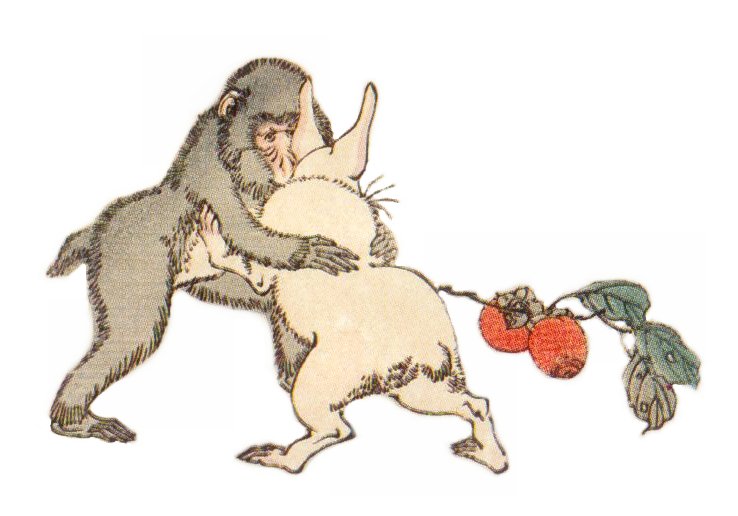
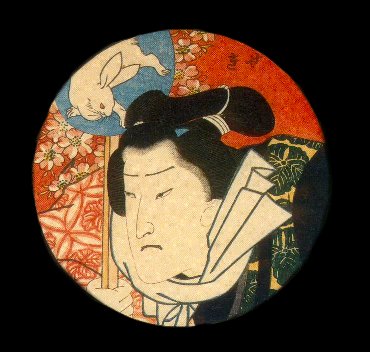
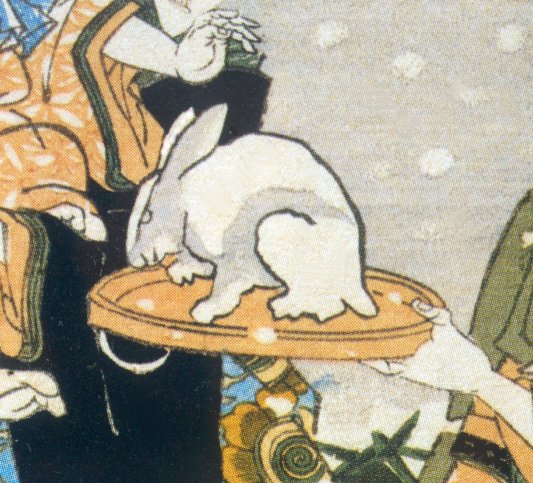
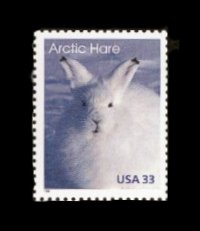
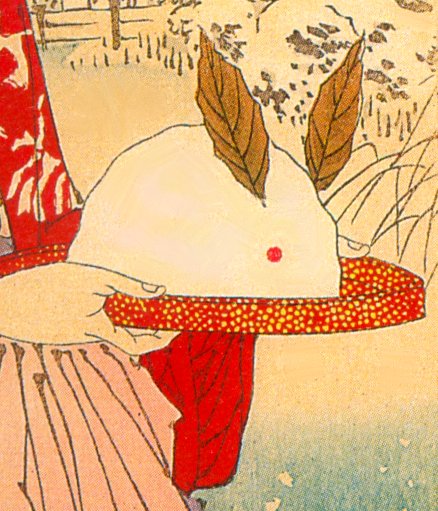
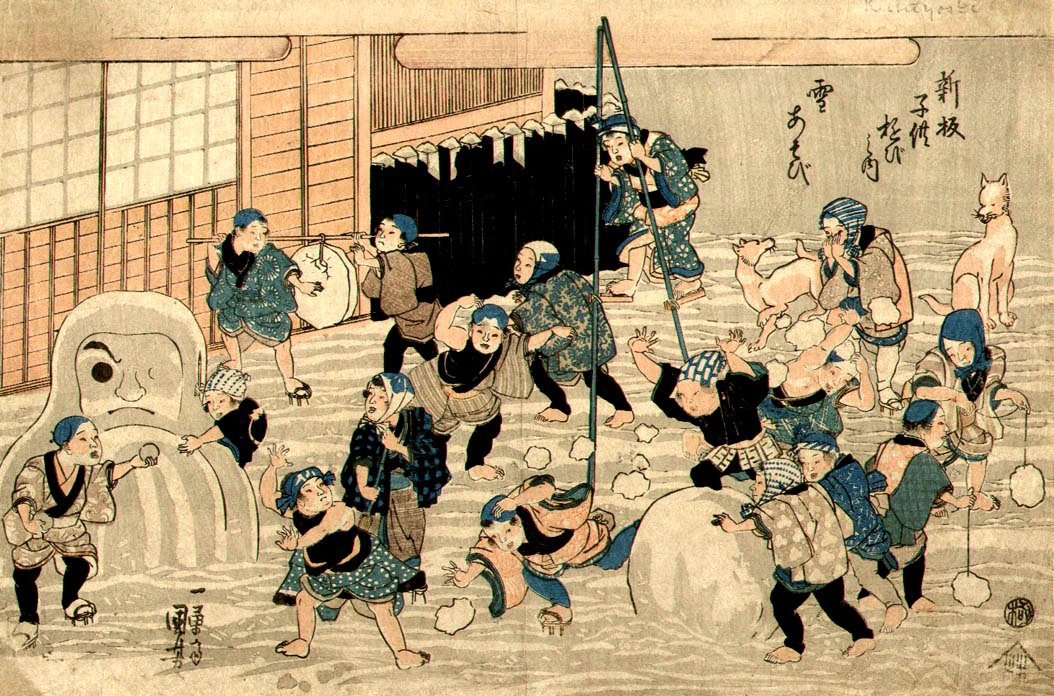
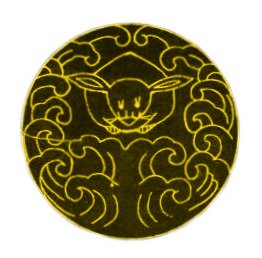
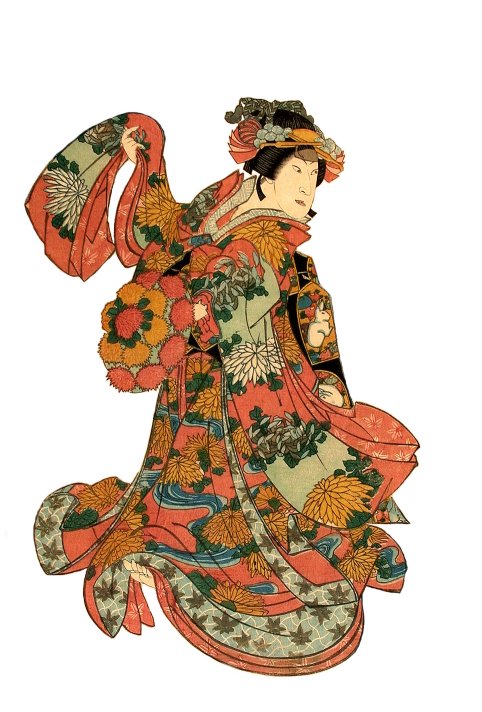
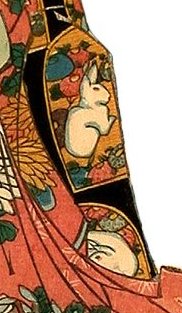
.jpg)
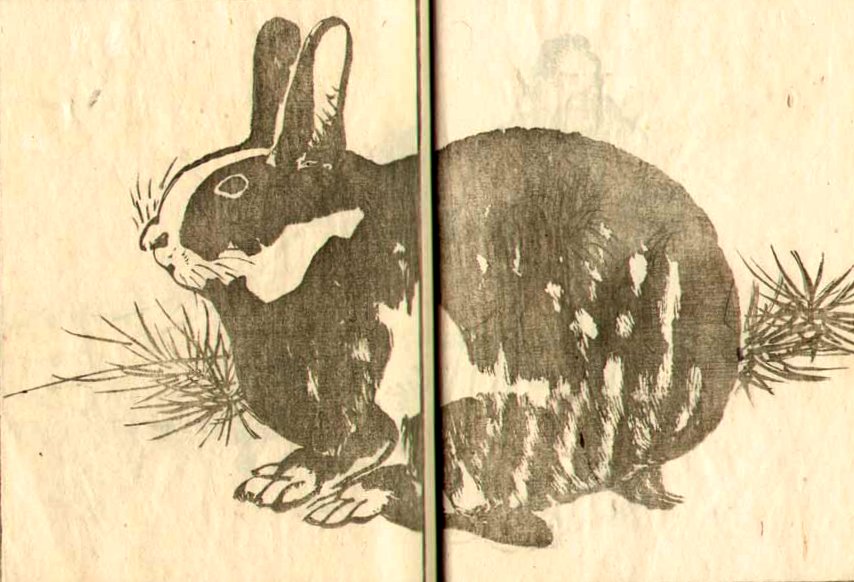


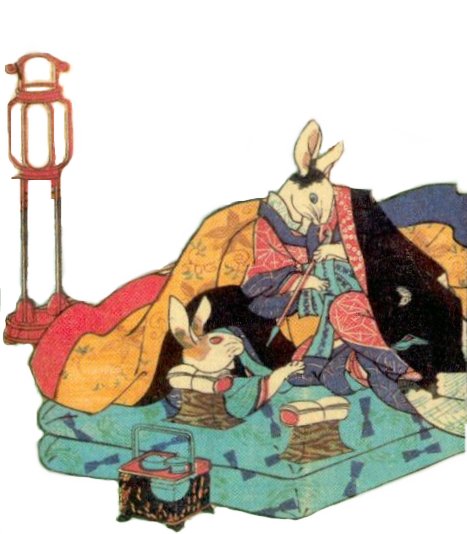
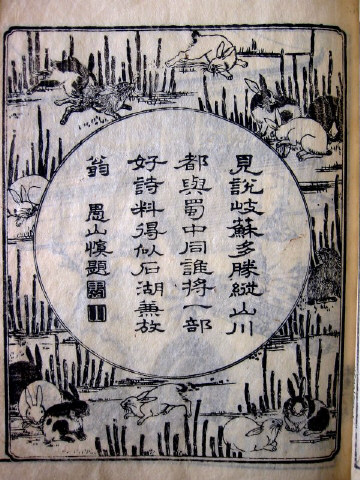
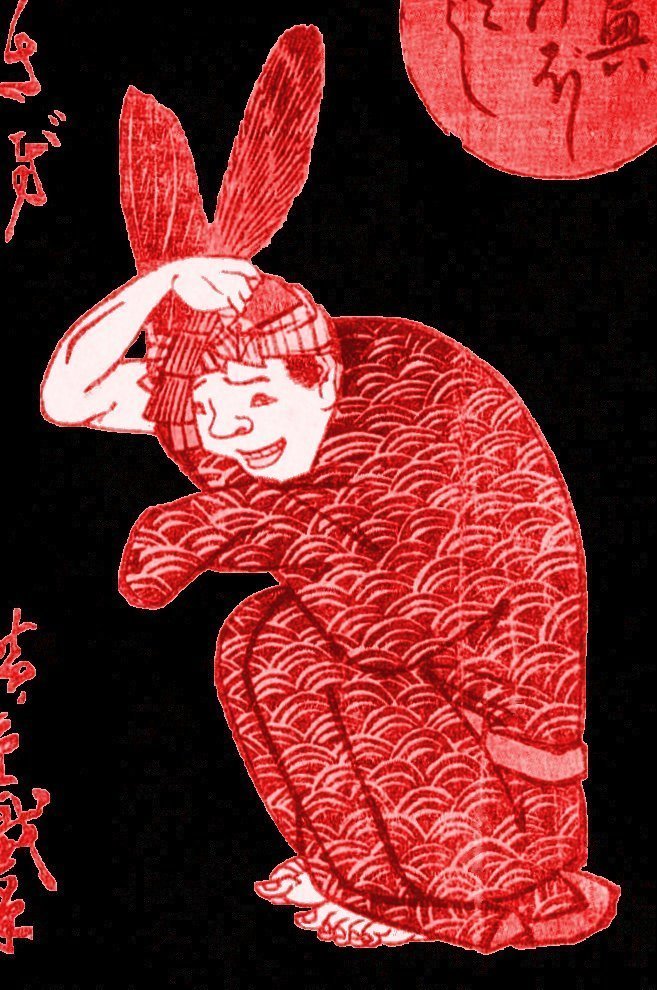
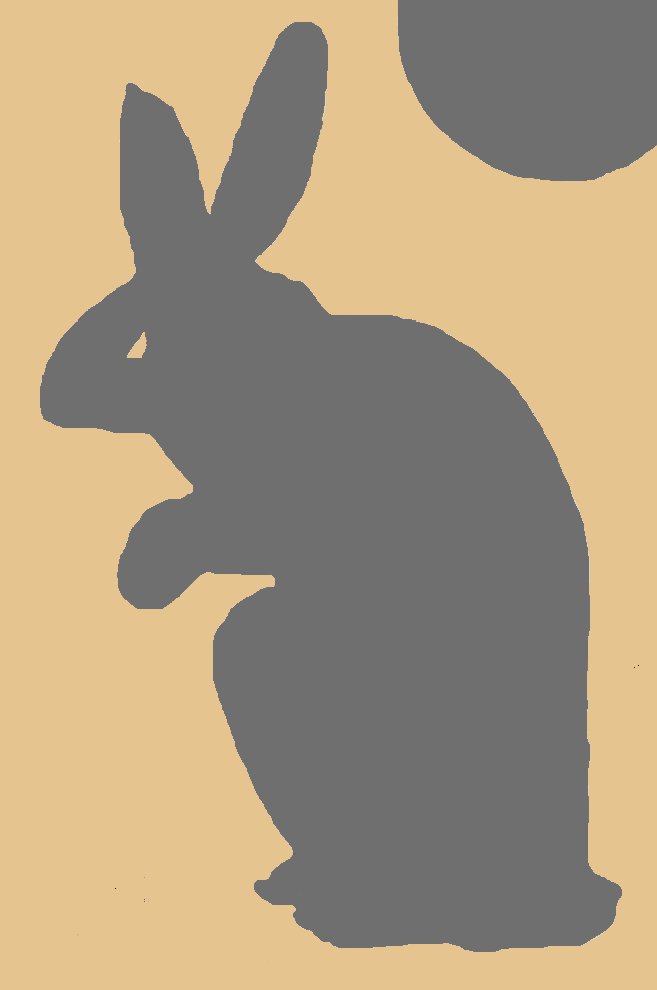
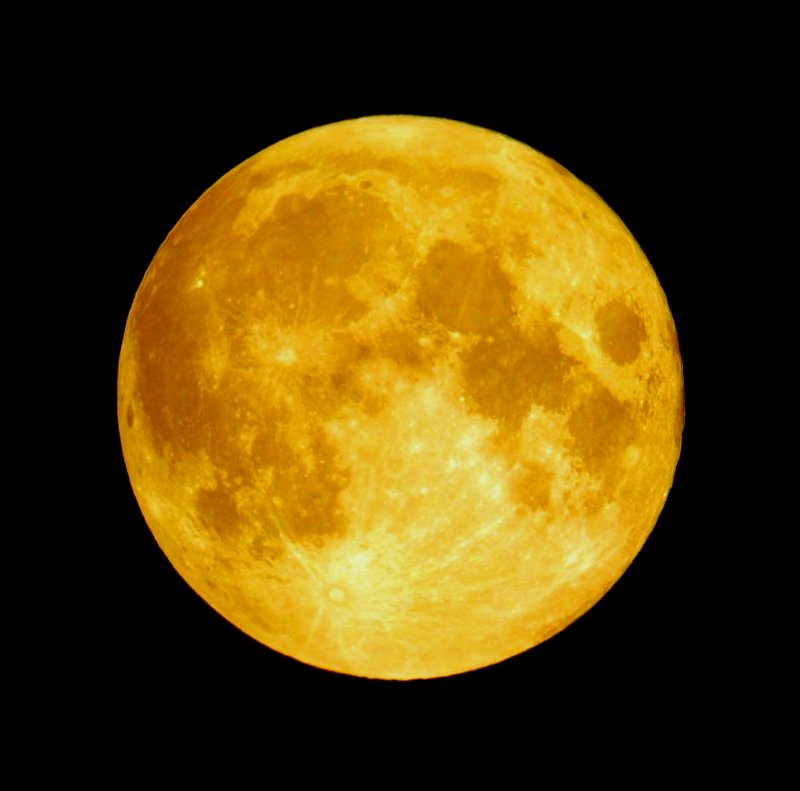
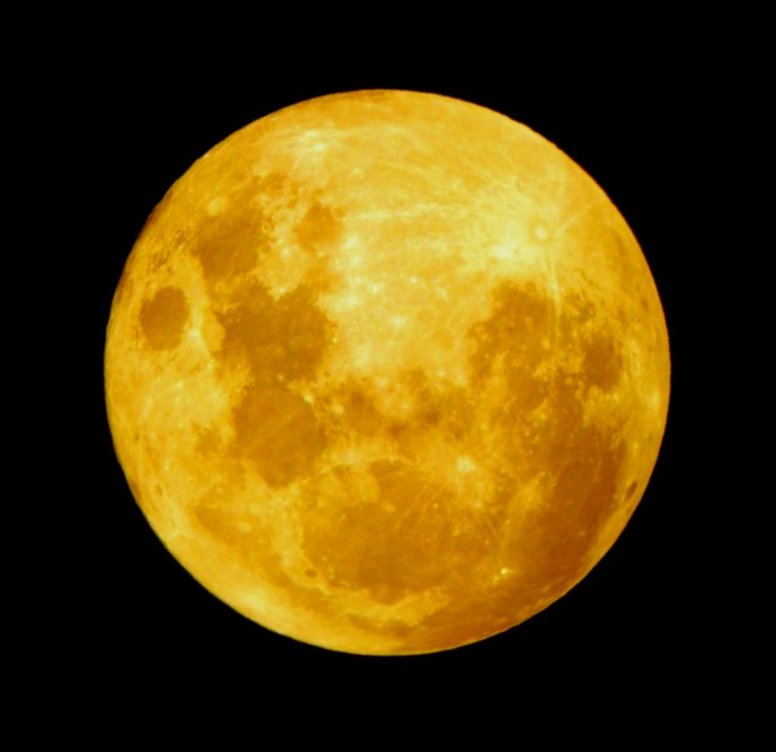
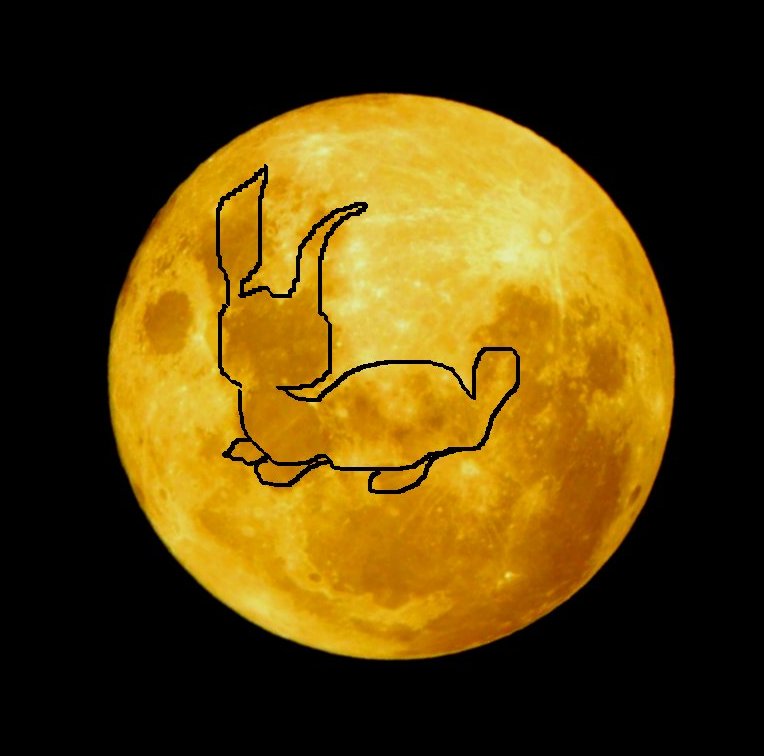
 HOME
HOME